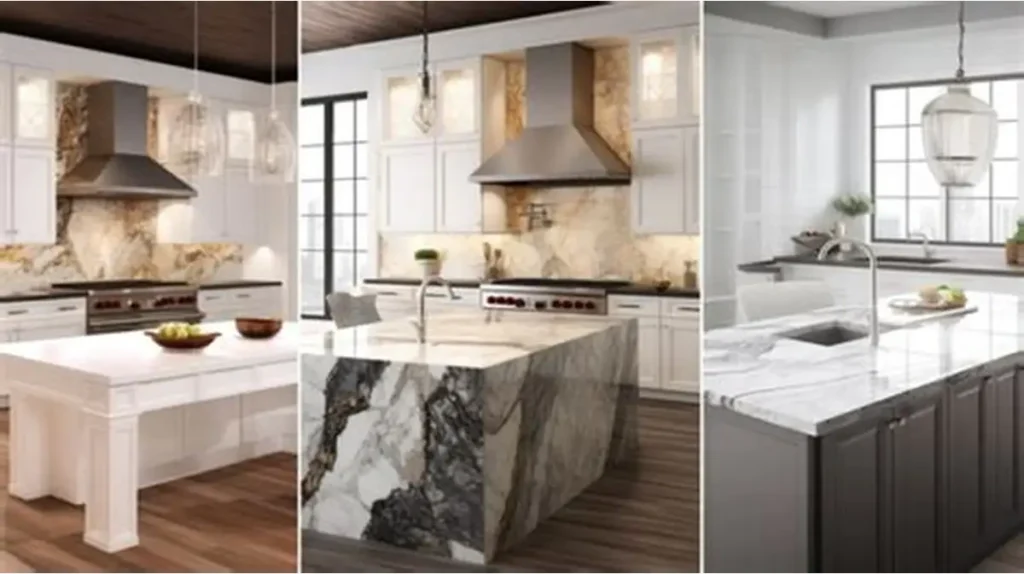Granite is one of the most popular and widely used natural stones in architecture, construction, and interior design. From elegant kitchen countertops to enduring monuments, granite plays a central role in both practical and decorative applications. But what lies beneath its speckled surface in geological terms? Is granite extrusive or intrusive? In this article, we explore the rock’s origins, characteristics, and classification.

What Is Granite?
Granite is a coarse-grained igneous rock composed mainly of quartz, feldspar, and mica. It forms deep within the Earth’s crust, offering a dense, durable structure with high resistance to wear and weathering. Thanks to its aesthetic variety, ranging from white granite countertops to black granite countertops, granite is a top choice for homeowners and designers.
Composition of Granite
- Quartz: Provides strength and light color
- Feldspar: Adds pink, white, or gray hues
- Mica: Contributes to shine and dark specks
These minerals are tightly packed together, giving granite its durability and visual appeal.

Igneous Rocks: Intrusive vs. Extrusive
To determine whether granite is extrusive or intrusive, it’s essential to understand how igneous rocks are classified.
What Are Igneous Rocks?
Igneous rocks form when magma or lava cools and solidifies. The cooling environment determines the crystal size and structure of the resulting rock:
- Intrusive igneous rocks (also called plutonic): Form below the Earth’s surface. The slow cooling process creates large, visible crystals.
- Extrusive igneous rocks (also called volcanic): Form on or near the surface, where lava cools rapidly, resulting in fine-grained or glassy textures.
Is Granite Intrusive or Extrusive?
Granite Is Intrusive
Granite is an intrusive igneous rock. It forms from magma that cools slowly beneath the Earth’s surface. This process allows for the development of large crystals, easily seen in granite slabs.
Because of its underground formation, granite has a coarse-grained texture and superior strength, which explains its widespread use in structures, buildings, and high-traffic surfaces like granite kitchen countertops and bathroom vanities.
Learn more about Is Granite Intrusive?
Why Not Extrusive?
Extrusive rocks, like basalt or pumice, cool too quickly for visible crystals to form. Granite, with its prominent grain and interlocking crystals, clearly doesn’t fit that category.
Characteristics of Granite Stone
Texture and Appearance
- Large, visible crystals
- Wide variety of colors: white, black, pink, gray, green
- Unique veining and speckling
Physical Properties
- High compressive strength
- Excellent abrasion resistance
- Low porosity (can be enhanced with sealing)
- Heat-resistant
These characteristics of granite make it ideal for use in both indoor and outdoor applications.
Applications of Granite in Everyday Life
Granite is used in:
- Countertops: Durable and stylish for kitchens and bathrooms
- Flooring: High traffic areas benefit from granite’s hardness
- Monuments & memorials: Long-lasting beauty
- Landscaping: Pathways, curbing, and retaining walls
Aesthetic Versatility
Whether you’re aiming for modern white granite countertops or rustic black granite countertops, granite adapts to your style.
Need to move large slabs? Check out Suction Cup tools for safe material handling.
Natural vs. Engineered Granite
Natural Granite
Quarried directly from Earth, cut into granite slabs, and polished. No two pieces are identical.
Engineered Granite
Made by combining crushed granite with resins. While more uniform, it lacks the raw authenticity of natural stone.
Granite Countertop Care & Maintenance
Cleaning and Polishing
Use pH-neutral cleaners and polishing granite surfaces periodically to retain shine.
Sealing Granite
Even low-porosity stone like granite benefits from sealing to prevent staining.
Have damage? Learn How to Fix Uneven Granite Countertops and How to Fix Dull Granite Countertops
Granite vs. Other Natural Stones
| Property | Granite | Quartz | Marble | Soapstone |
|---|---|---|---|---|
| Rock Type | Intrusive Igneous | Engineered | Metamorphic | Metamorphic |
| Durability | Very High | High | Medium | Medium |
| Maintenance | Moderate | Low | High | Low |
| Porosity | Low | Very Low | High | Low |
Explore more: Natural Stone Countertop Comparison
Where to Buy Granite Countertops
Whether you need budget granite countertops or premium granite slabs, explore:
- Wholesale granite suppliers
- Local granite countertop showrooms
- Aardwolf granite countertop collection for high-quality and stylish options
Aardwolf Highlights
- Aardwolf premium granite slabs
- Aardwolf granite installation services
- Aardwolf granite pricing guide
- Best Aardwolf granite colors for any interior design
Conclusion: Granite Is Intrusive and Invaluable
So, is granite extrusive or intrusive? The answer is clear: granite is an intrusive igneous rock formed deep within the Earth’s crust. Its formation process gives it the crystal-rich, durable qualities that make it a favorite for architects, designers, and homeowners.
Understanding its origins helps you make informed decisions when investing in granite stone, whether you’re focused on granite countertop cost, aesthetics, or performance.
Related Resources: • Is Granite Extrusive? • Is Granite Intrusive?

